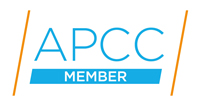PTs remain a big part of the marketplace

Bob Hunt
21 December 2023Look at the recent mortgage figures and forecasts to come out of UK Finance and you’ll see that it wasn’t until 2020 that we finally had a value to put on PTs – £168bn of lending in that year.
Since then – and I suspect this will surprise no-one – that PT value figure has risen with each and every year, to a point where it is forecast to be £219bn this year, almost four times the residential remortgage market, which is forecast to be £65bn.
Even when you add in buy-to-let remortgage business as well, that total is still just £85bn, far below the total PT value.
Now, I fully understand that – particularly throughout 2023 – there are many good reasons why PT business was at such high levels, and I’m also acutely aware that in those years prior to the figures being known, lenders took the vast majority of PT business whereas now that’s not the case.
As an aside, what do we believe the intermediary share of PT business to be? I read a recent piece which quoted AMI’s Robert Sinclair saying it used to be around 20-25% but is now closer to 40%.
Again, positive to see that increase and also positive to see a growing intermediary mortgage market share in general, but when PT is by far the dominant product choice, and where that business pays less proc fee to advisers, it should still be an area of concern.
Especially when you set this against falling purchase lending – down from £189bn two years ago/£168bn last year, to £130bn this year and predicted to fall again in 2024, and falling remortgage lending this year, with a predicted fall over the next two years.
It’s widely believed that the number of mortgage maturities throughout 2024 is going to be less than this year, and while this is reflected in PT business predicted to fall over the next two years – down from £219bn to £202bn (2024) and £195bn (2025) – it is clearly still at very high levels, especially when advisers have nowhere near the same penetration for PTs as they do for remo/purchase.
On that point, one presumes UK Finance has a sliding scale of PT business projections over the next couple of years not just because of less maturities, but also under the assumption lower rates will make remortgaging easier/more competitive, particularly in terms of meeting affordability requirements.
In other words, whereas PTs have been the only option for many borrowers throughout 2023 because of much higher rates, as pricing comes down, the ability to remortgage away will be greater, and there will be more movement between lenders.
That, in itself, will be a much more positive working environment for advisers as the full procuration fee available for a remortgage is going to be a better income level than the PT.
However, at the same time, we have to be wary of customers PT-ing directly, or having done it once doing so again because they believe their only option is to take what’s on offer from the existing lender due to their circumstances, and without checking with the adviser. Hence the need for constant contact between adviser and existing borrower.
Overall, the lending figures, while clearly down on 2021/2022, remain above £200bn this year for non-PT business, and remain well over £400 bn for the years ahead when you add in the projected PT volumes as well.
That is a significant amount of business to aim for in anyone’s book, and if rates do continue to fall, if lenders have to get more competitive, if affordability does become an easier obstacle to get over – and I believe these are trends we are already seeing – then the opportunities for advisers to take an even bigger share of this business is certainly there to be grasped.
At the same time, we should as an industry continue to talk about the campaign for procuration fee parity between PT and remortgage business, however having spoken about this to a large number of lenders, it seems highly unlikely they will change their mind anytime soon.
Even if we offer other solutions such as a temporary increase, or potentially some kind of trade-off with ‘normal’ proc fee payments, given that PT is now such a big part of the marketplace.
So, in lieu of that, we have to turn that 40% PT market share into something that looks a lot like the intermediary share of the rest of the mortgage market.
That may well require a change in behaviours and habits for some advisory firms or it might just require a continuation of habits that are adopted when the mortgage market is not running at the levels we saw a couple of years ago.
I see many firms who work incredibly hard to stay interested and invested in the client, and by that I mean not just in terms of the mortgage transaction but of course in terms of ancillary wants and needs such as protection.
That recurring income you generate not only helps you in the immediate short- and medium-term with regards to additions to the bottom line, but it also translates into a multiple of the business’ value when you come to sell it.
It’s moving from an attitude of ‘I do a bit of that when I’m not busy with mortgages’, to ‘I always do that for every single client’, and I invest in the technology, the people and practices to allow me to easily look after these needs and grow and write that business repeatedly.
By doing this, you give yourself every chance of continuing to service all existing clients’ needs, and you ensure they are not lost to a PT in a few years’ time because they feel you have nothing else to offer. You are effectively giving them no choice but to keep using your trusted services.


